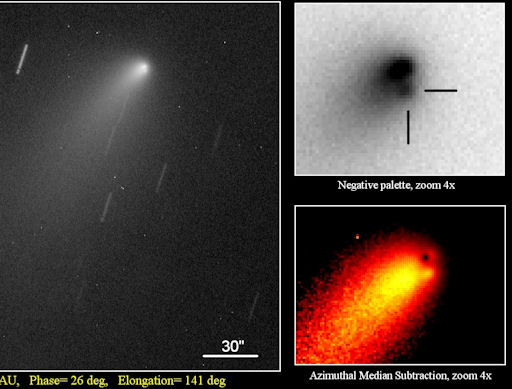

| Visitors Now: | |
| Total Visits: | |
| Total Stories: |

By Extinction Protocol: 2012 Earthchanges and News Event (Reporter)
Contributor profile | More stories
Contributor profile | More stories
| Story Views | |
| Now: | |
| Last Hour: | |
| Last 24 Hours: | |
| Total: | |
Astronomers eye another comet possibly torn by the Sun’s gravity
Saturday, October 27, 2012 0:30
% of readers think this story is Fact. Add your two cents.
October 27, 2012 – SPACE – Amateur astronomers have been keeping a close eye on Comet 168P/Hergenrother since October 1st when it suddenly brightened 500-fold, from 15th to 8th magnitude. At the time, tthe comet was making its closest approch to the sun (1.4 AU). Some observers speculated that solar heating caused the fragile comet to break apart. Last night, a group of astronomers found evidence to support this idea. “Using the Faulkes North (F65) telescope,” writes Ernesto Guido et al., “we detected a fragmentation in Comet 168P. Our images, taken on Oct. 26th, reveal the presence of a secondary nucleus, or fragment, about two arcseconds away from the main central condensation of comet 168P.” This is probably a chunk of rocky ice emerging from the haze of gas and dust that surrounds the main nucleus, still hidden inside. Comets are notoriously fragile, so it’s no surprise that Comet 168P/Hergenrother is breaking apart in this way. The only question is what happens next? Will the comet spit in two, with two heads and two tails, one tracking the fragment and the other tracking the parent? Or is this the prelude to a more complete disintegration. –Space Weather
2012-10-27 00:20:14
Source:



